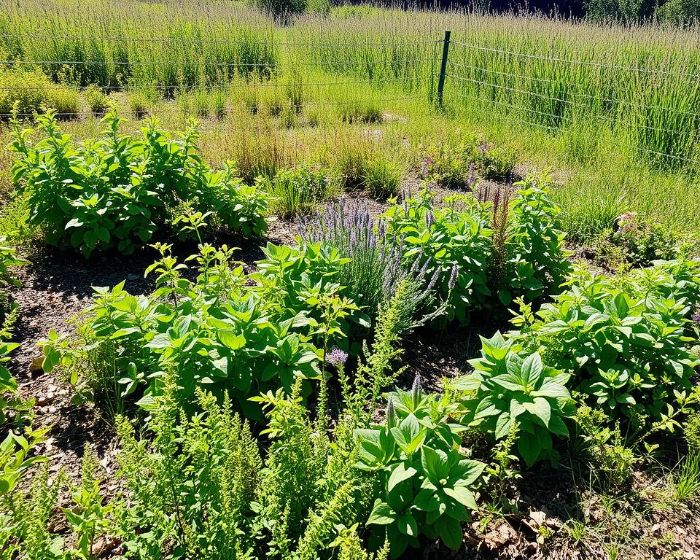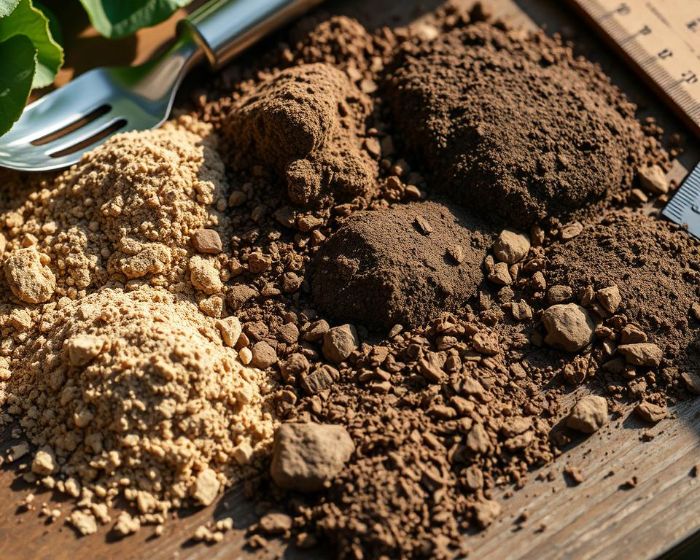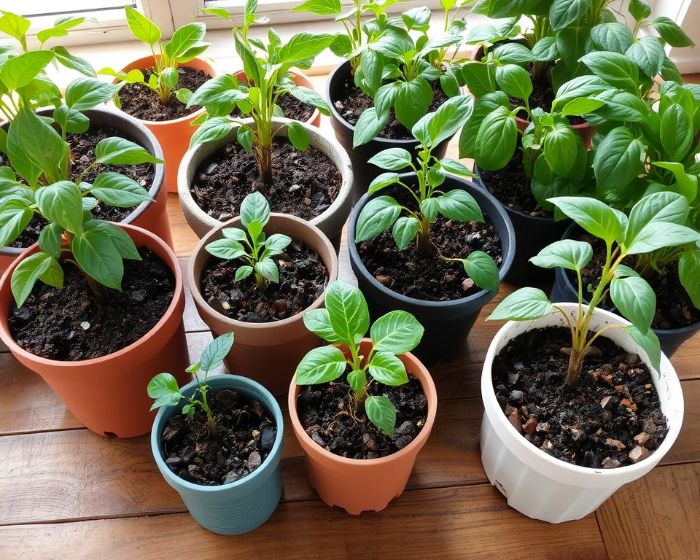Have you ever noticed some plants just don’t grow well, despite your care? Do their leaves turn yellow and not grow as much as they should? The reason might be nitrogen deficiency. Nitrogen is very important for plants to grow strong. Without enough nitrogen, plants can’t be healthy. Their growth may slow down. Let’s learn how to spot when plants lack nitrogen and what we can do to help them.
Key Takeaways:
- Nitrogen deficiency can stop plant growth and cause problems like yellow leaves and no proper growth.
- Finding out if plants lack nitrogen is important early on so we can help them.
- Tests and tools can check if plants need more nutrients like nitrogen.
- We can give plants both natural and man-made nitrogen fertilizers to make them healthy again.
- Keeping plants from lacking nitrogen needs good soil care and constant checking.
Table of Contents
About Nitrogen Deficiency in Plants
Nitrogen is key to the health and growth of plants. It’s needed for many plant processes. We will look at why nitrogen is important for plants. We will also check its role in how plants work.
Importance of Nitrogen for Plant Health
Nitrogen is a must-have for plants to grow well. It’s in chlorophyll, which helps with photosynthesis. Photosynthesis is where plants turn light into energy. This energy makes plants able to make food and nutrients. If plants lack nitrogen, they can’t photosynthesize well. This leads to slower growth and less food.
Also, nitrogen helps plants build important compounds. It’s in amino acids, the building blocks of proteins. Proteins are needed for plant growth and to fight off pests and diseases. Nitrogen is also in DNA and RNA. These are plant’s genetic codes. They guide how plants grow and develop.
Overview of Nitrogen’s Role in Plant Metabolism
Nitrogen is needed for many plant processes. It helps make enzymes. These enzymes speed up chemical reactions. Enzymes are important for how plants eat, make energy, and grow.
Additionally, nitrogen helps make special plant compounds. This includes alkaloids, flavonoids, and oils. These compounds help plants protect themselves. They also help plants interact with their surroundings and attract pollinators.
Nitrogen is a big part of plant life. It’s essential for growth, development, and protection.
Recognizing the Signs of Nitrogen Deficiency
Knowing the signs of nitrogen deficiency helps with quick fixes. This way, gardeners and farmers can save their plants. They will ensure their plants grow healthy.
Early Symptoms to Watch For
Early signs of low nitrogen are pretty easy to see. Maybe your plant’s leaves are light green or yellow. This happens because the plant doesn’t have enough chlorophyll.
Without nitrogen, plants don’t grow well. They might stay small because they lack protein. Plants need protein for growth. But, low nitrogen stops this process.
Visual Indicators of Severe Nitrogen Deficiency
If a plant really lacks nitrogen, it shows. The leaves might turn yellow first. This especially shows on the young leaves.
Severe cases can make the leaves die, leaving spots. Plants need nitrogen to make enzymes and proteins. Without them, the plant’s cells die. That’s what causes the spots on the leaves.
When plants can’t grow well, they stay small. If they look like they should be bigger, check their nitrogen. This means they aren’t getting enough nutrients to grow right.
Knowing these signs means you can help your plants early. Then, they’ll grow strong and healthy.
Impact of Nitrogen Deficiency on Plant Growth
Nitrogen deficiency greatly affects plant growth and development. It’s critical for photosynthesis, where sunlight turns into energy. Without enough nitrogen, plants can’t make a lot of chlorophyll. This means they can’t absorb as much light for energy.

So, if plants lack nitrogen, they can’t make as much energy. This affects how fast they grow and how well they do overall. They’ll grow small, with tiny leaves and not much leaf space. They won’t bloom as soon, and they won’t make many seeds.
In time, not having enough nitrogen can harm plants’ health. They become easier targets for sickness and bugs. Their defenses weaken, making them less able to fight off harm.
This shortage can also hurt plants over the long term. They won’t be as healthy, making less of what our bodies need. This could affect the food available for us and animals. It’s a big deal for keeping the entire living chain healthy.
Gardeners must know about nitrogen lack and what it does to plants. They should make sure plants get the right amount. This helps plants not only grow big but also cope with tough environments. The right use of nitrogen fertilizers is key for a thriving garden or farm.
Diagnosing Nitrogen Deficiency
Finding out if a plant lacks nitrogen is key. Gardeners and farmers use various tools and tests. These help figure out what their plants need. This way, they can give the perfect fix for nitrogen problems. It makes plants grow healthy.
Tools and Tests to Confirm Nutrient Deficiencies
To spot nutrient lacks in plants, many tools and tests work well.
- Soil Testing – Testing soil is a good way to check on nutrients like nitrogen. It shows what’s in the soil and helps decide on the right fertilizer.
- Tissue Analysis – Testing plant tissues can show how much nitrogen is there. It tells if plants need more food.
- Visual Symptom Interpretation – Looking at plant signs can also tell us if there’s not enough nitrogen. Small size, yellow leaves, and weak plants can mean this.
Using these methods together, growers understand what their plants lack. Then they can fix it right.
Differentiating Nitrogen Deficiency from Other Nutrient Shortages
Telling nitrogen lack apart from other needs is crucial. Symptoms can look similar. So, choosing the correct fix is important.
One way is to look closely at what the plant looks like. Comparing symptoms with known signs helps. Using special tools can also confirm if it’s really a nitrogen issue.
Learning the specific signs of nitrogen lack is vital. It helps growers give the exact care their plants need.
Remediation Steps for Nitrogen Deficiency
If your plants lack nitrogen, acting fast is key to help them grow healthy again. It all starts with picking the right nitrogen-rich fertilizers and using them well to see quick improvements.
Choosing the Right Nitrogen Fertilizers
When choosing nitrogen fertilizers, think about what your plants really need. It’s important to know how much nitrogen different plants require. Testing your soil can tell you the current nitrogen levels and help pick the right amount of fertilizer.
Think about how fast the fertilizer should work, too. Some provide nutrients slowly, others right away. The best one depends on what your plants are like and when they need the nitrogen the most.
How you put the fertilizer on matters a lot, as well. It can go on in many ways, like onto the soil, directly on the leaves, or with the water. Each way helps the plants in different but important ways. Picking the right way can make sure your plants use the nitrogen well.
Application Techniques for Quick Recovery
An important method for getting nitrogen to plants quickly is side-dressing. This means putting the fertilizer right by the plants. It lets the roots get to it directly, which is very effective.
Putting nitrogen on the leaves, called foliar spraying, also works fast. This is great for a sudden need or when the plant can’t take in enough food from the ground. But, it must be done just right to avoid harming the leaves.
Using irrigation to add fertilizer, like with fertigation, is helpful for many plants at once. This way, the nitrogen gets spread out evenly and exactly where it’s needed.
Keeping an eye on how the plants change is a must during this fix-it process. Check their growth and the color of their leaves, and test the soil now and then. This helps you adjust what you’re doing if the plants need more help.
By picking the right fertilizers and ways to use them, you can beat nitrogen deficiency. This will help your plants grow strong and stay healthy.
Organic Remedies for Enhancing Nitrogen Levels
In plants, boosting nitrogen levels can be done naturally and friendly to the environment. It includes using compost, green manure, and smart planting like crop rotation and legumes.
Using Compost and Green Manure
Compost is a top pick for adding nitrogen back into the ground. It’s made from old food, garden waste, and animal droppings. This mix slowly gives nitrogen to plants. So, your plants stay healthy and strong while not overwhelming the soil with nutrients.
Green manure adds nitrogen too. It’s crops like clover or beans that are grown and turned back into the soil. They bring nitrogen-fixing bacteria with them. These bacteria help the plants take nitrogen from the air and put it in the soil for others to use.

Benefits of Crop Rotation and Legume Planting
Changing the crops you grow each season is good for the soil. It uses less nutrients. It also includes plants like beans that help add nitrogen back to the ground. Beans do a special job by taking nitrogen from the air and putting it in the soil.
Beans and their friends have other plus points too. They don’t need lots of care and they’re okay in dry weather. Their roots make the soil better, letting in more water and air. Plus, you can eat them or feed them to animals.
These methods are great for anyone growing plants. They help keep the soil rich in nitrogen and in good health. Plus, they’re good for the Earth.
Preventing Nitrogen Deficiency
Keeping plants healthy means we must take care of the soil. This is especially true when it comes to nitrogen. With the right soil care, plants grow well and stay healthy. Let’s talk about how to make sure plants get enough nitrogen.
Soil Management Practices to Maintain Adequate Nitrogen
To avoid nitrogen problems, using the right fertilizers is key. The right fertilizers can boost nitrogen for the plants. When choosing fertilizers, look at the nitrogen content and the needs of your plants.
Another good practice is using compost or green manure. These options slowly release nitrogen into the soil. This helps keep plants healthy over time.
Regular Monitoring and Maintenance Strategies
It’s vital to check the soil and the plants regularly. By testing the soil, you can see if it needs more nitrogen. This helps keep the right balance for healthy plants.
Looking at your plants can also show if they need more nitrogen. Watch for signs like yellow leaves. This means it’s time to give them more nitrogen.
Getting the water right is also important. Too much water can wash away nitrogen. But, not enough water stops plants from taking in nitrogen. So, check the soil’s moisture and water your plants right.
Using these tips for your soil and checking nitrogen levels often can keep your plants healthy. This is a key part of making sure your crops grow well.
The Role of Nitrogen in Integrated Plant Nutrition Management
Nitrogen is key in looking after plants’ food needs. It’s vital to mix with other food elements. Knowing how nitrogen affects plants is central to good farming.
Nitrogen helps plants grow strong. It’s in proteins, helps make enzymes, and gives leaves their green color. It supports good roots and fights off stress in plants.
Plants need the right amount of nitrogen. It must be balanced with other plant foods. This stops problems that might slow plant growth.
Drawing plans for how to use nitrogen well is part of farming smart. It’s about understanding what plants really need. This helps use nitrogen in the best way for big, healthy plants.
Balancing Nitrogen with Other Essential Nutrients
We must be careful about how much nitrogen we give plants. It’s based on what each kind of plant needs. We also think about the land and the weather.
Getting the nitrogen balance right is key. It makes sure plants grow well. It stops too much nitrogen from harming plants or the environment.
We can add things like compost to help the soil. This method feeds plants gradually. Plus, it keeps nitrogen from building up too fast.
Avoiding Excess Nitrogen and Its Negative Effects
Nitrogen is great for plants, but too much is bad. It can hurt the plants and their home. Applying too much nitrogen hurts plant health and growth.
Too much nitrogen can make plants grow too many leaves. This means less fruit or seeds. It also makes plants weaker against sickness and stress.
Extra nitrogen that plants don’t use can hurt water. It ends up in rivers and lakes. This can make the water unhealthy for plants and animals.
To keep plants and water safe, use the right amount of nitrogen. Test the soil to know what plants need. Follow instructions to protect plants and the planet.
Conclusion – Ensuring Plant Health Through Adequate Nitrogen Supply
Having enough nitrogen is key for plant health and good crop yields. We’ve talked about how important it is to know when plants lack nitrogen. We’ve also learned steps to fix this and how to stop it from happening again.
It’s vital to keep an eye on the soil’s nutrients to make sure plants get enough nitrogen. This involves proper use of fertilizers, adding organic materials, and reusing nutrients. These actions help plants grow strong and prevent a lack of nitrogen.
Nitrogen is crucial for plants because it helps in many ways. It’s part of chlorophyll, needed for plants to make their food and grow. Nitrogen is also in proteins, enzymes, and DNA. By making sure plants have the nitrogen they need, we help them grow better and increase what they yield. This is good for farming and for the environment.
FAQ
What are the signs of nitrogen deficiency in plants?
Plants lacking nitrogen show pale-green leaves and grow slowly. Their leaves may turn yellow and die. This makes the plant look stunted.
Why is nitrogen important for plant health?
Nitrogen is key for plant health as it makes chlorophyll. This is vital for photosynthesis and creates plant energy. It’s also needed for making amino acids, DNA, proteins, and enzymes.
How does nitrogen deficiency impact plant growth?
Not having enough nitrogen leads to less chlorophyll and slow growth. It reduces the amount of plant material. This lowers crop yields and raises the risk of diseases and pests.
How can nitrogen deficiency in plants be diagnosed?
We can figure out if plants lack nitrogen by using soil and tissue tests. Seeing certain leaf colors or patterns can also help. It’s vital to tell nitrogen shortage apart from other nutrient problems.
What are the remediation steps for nitrogen deficiency?
To fix low nitrogen, adding the right fertilizers is crucial. Choose fertilizers that match the plant’s needs in nitrogen, release it well, and are applied correctly.
How can nitrogen deficiency be prevented in plants?
Avoiding nitrogen shortage can be done by taking good care of the soil. This includes proper fertilization, reusing nutrients, and adding organic material. Keeping an eye on plant health helps catch problems early.










